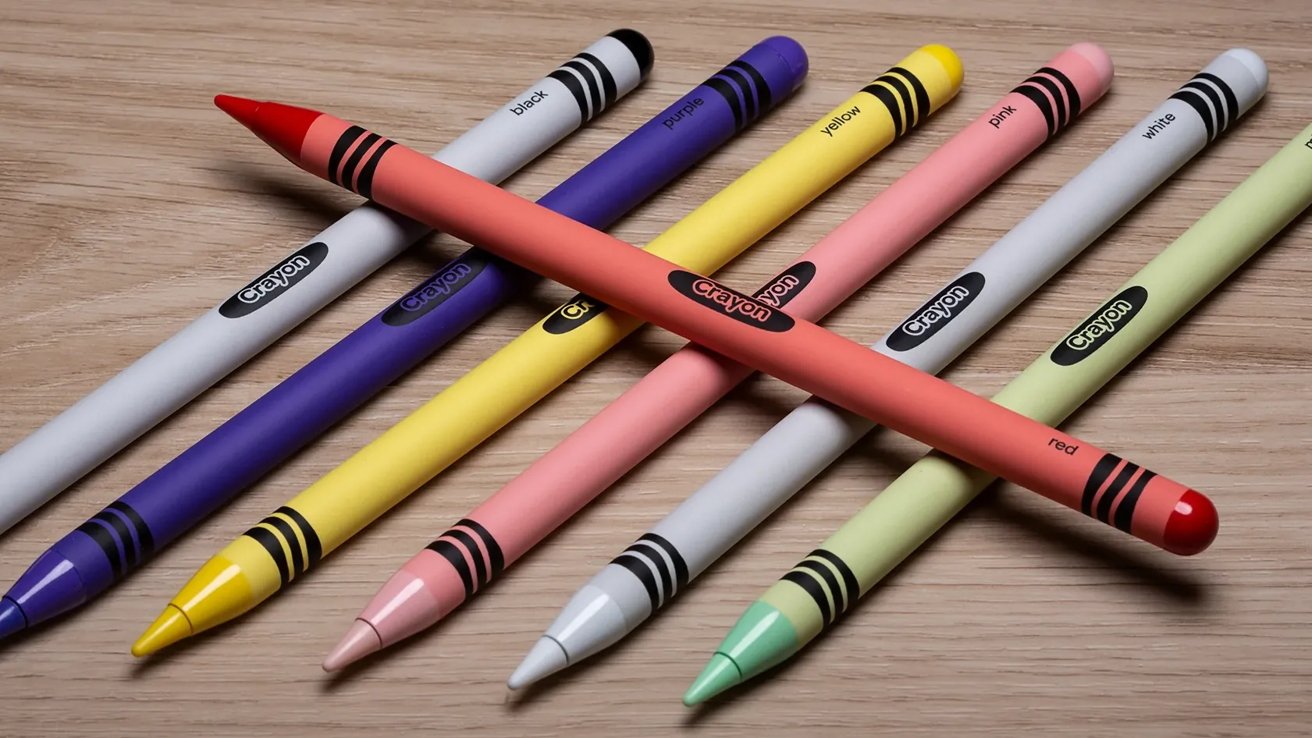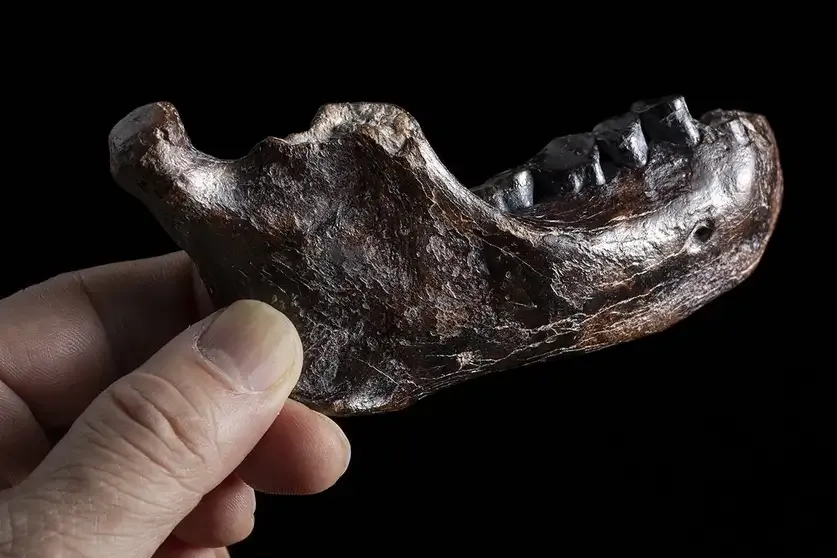0 Commentarii
0 Distribuiri
72 Views

Director
Director
-
Vă rugăm să vă autentificați pentru a vă dori, partaja și comenta!
-
 WWW.CREATIVEBLOQ.COMHow Tanuki: Pon's Summer infuses its art style with the aesthetic of rural Japanese festivals and animeDenkiWorks' Liam Edwards explains why this is not just another 'Ghibli style' game.0 Commentarii 0 Distribuiri 62 Views
WWW.CREATIVEBLOQ.COMHow Tanuki: Pon's Summer infuses its art style with the aesthetic of rural Japanese festivals and animeDenkiWorks' Liam Edwards explains why this is not just another 'Ghibli style' game.0 Commentarii 0 Distribuiri 62 Views -
 WWW.WIRED.COMAll the ‘Black Mirror’ Season 7 Episodes RankedIf world events aren’t satisfying your dystopia itch, here’s WIRED’s guide to the new season of ‘Black Mirror.’0 Commentarii 0 Distribuiri 54 Views
WWW.WIRED.COMAll the ‘Black Mirror’ Season 7 Episodes RankedIf world events aren’t satisfying your dystopia itch, here’s WIRED’s guide to the new season of ‘Black Mirror.’0 Commentarii 0 Distribuiri 54 Views -
 WWW.COMPUTERWORLD.COMApple flew 600 tons of iPhones from India to the US to avoid Trump tariffsApple chartered six planes to fly 600 tons of iPhones into the US from India to avoid President Donald J. Trump’s tariffs, Reuters reports. That’s an estimated equivalent of up to 1.5 million smartphones. The company relies on iPhone manufacturers located in both China and India; China has now been hit with tariffs totaling 145% and India tariffs of 26%, though Trump this week paused those on India for 90 days. Apple reportedly negotiated with Indian airport authorities to reduce the customs time at the airport in Chennai from 30 hours to six. Neither Apple nor the Indian aviation authority commented on the matter. According to data from Counterpoint Research, one-fifth of all iPhones sold in the US are imported from India. The rest will come from China.0 Commentarii 0 Distribuiri 61 Views
WWW.COMPUTERWORLD.COMApple flew 600 tons of iPhones from India to the US to avoid Trump tariffsApple chartered six planes to fly 600 tons of iPhones into the US from India to avoid President Donald J. Trump’s tariffs, Reuters reports. That’s an estimated equivalent of up to 1.5 million smartphones. The company relies on iPhone manufacturers located in both China and India; China has now been hit with tariffs totaling 145% and India tariffs of 26%, though Trump this week paused those on India for 90 days. Apple reportedly negotiated with Indian airport authorities to reduce the customs time at the airport in Chennai from 30 hours to six. Neither Apple nor the Indian aviation authority commented on the matter. According to data from Counterpoint Research, one-fifth of all iPhones sold in the US are imported from India. The rest will come from China.0 Commentarii 0 Distribuiri 61 Views -
 APPLEINSIDER.COMApple Pencil Pro can now look like a crayonColorWare's new custom-painted Apple Pencil Pro is as close as you can get to using actual crayons on an iPad, and it's sure to bring back some fond memories.Your Apple Pencil Pro can now look like crayon. Image Credit: ColorWareColorWare, known for offering customized Apple accessories such as painted AirPods, unveiled a modified version of the Apple Pencil Pro that's meant to resemble a crayon. Dubbed the "Apple Crayon Pro," ColorWare's latest special edition design is available in seven vibrant colors — black, mint, pink, purple, red, white, and yellow.The company's limited edition product retains all the functionality of the standard Apple Pencil Pro, only in a new design that undoubtedly evokes nostalgia. The "Apple Crayon Pro" accurately imitates the wrapper of genuine crayons, and it even features a colored tip to match. If it wasn't for the word "Crayon" on the side, you might almost think it's an actual Crayola product. Continue Reading on AppleInsider | Discuss on our Forums0 Commentarii 0 Distribuiri 105 Views
APPLEINSIDER.COMApple Pencil Pro can now look like a crayonColorWare's new custom-painted Apple Pencil Pro is as close as you can get to using actual crayons on an iPad, and it's sure to bring back some fond memories.Your Apple Pencil Pro can now look like crayon. Image Credit: ColorWareColorWare, known for offering customized Apple accessories such as painted AirPods, unveiled a modified version of the Apple Pencil Pro that's meant to resemble a crayon. Dubbed the "Apple Crayon Pro," ColorWare's latest special edition design is available in seven vibrant colors — black, mint, pink, purple, red, white, and yellow.The company's limited edition product retains all the functionality of the standard Apple Pencil Pro, only in a new design that undoubtedly evokes nostalgia. The "Apple Crayon Pro" accurately imitates the wrapper of genuine crayons, and it even features a colored tip to match. If it wasn't for the word "Crayon" on the side, you might almost think it's an actual Crayola product. Continue Reading on AppleInsider | Discuss on our Forums0 Commentarii 0 Distribuiri 105 Views -
 ARCHINECT.COM5468796 Architecture leads a select group of RAIC Annual Awards winners for 2025Today, 5468796 Architecture received the RAIC 2025 Architectural Practice Award from the Royal Architectural Institute of Canada as part of the organization’s 2025 Annual Award program that includes the RAIC Gold Medal as well as individual awards for Advocate for Architecture, Research & Innovation, and contributions to Architectural Journalism and Media in the country and abroad.The 18-year-old Winnipeg-based practice founded by Johanna Hurme and Sasa Radulovic received the honor for their ability to match the country's inbound housing needs through a "profound" reading of capital financing and the application of two core tenants that challenge architecture to broaden itself into part of an urban strategy for the better social good. Their official citation from the 2025 jury reads:0 Commentarii 0 Distribuiri 81 Views
ARCHINECT.COM5468796 Architecture leads a select group of RAIC Annual Awards winners for 2025Today, 5468796 Architecture received the RAIC 2025 Architectural Practice Award from the Royal Architectural Institute of Canada as part of the organization’s 2025 Annual Award program that includes the RAIC Gold Medal as well as individual awards for Advocate for Architecture, Research & Innovation, and contributions to Architectural Journalism and Media in the country and abroad.The 18-year-old Winnipeg-based practice founded by Johanna Hurme and Sasa Radulovic received the honor for their ability to match the country's inbound housing needs through a "profound" reading of capital financing and the application of two core tenants that challenge architecture to broaden itself into part of an urban strategy for the better social good. Their official citation from the 2025 jury reads:0 Commentarii 0 Distribuiri 81 Views -
 GAMINGBOLT.COMLa Quimera Takes 5 Hours to Finish, Doesn’t Feature Metro Exodus-Style WorldWhile the studio formerly known as 4A Games Ukraine (now Reburn) is currently working on La Quimera, project director Oleksandr Kostiuk has revealed more details about the upcoming sci-fi shooter. In an interview with WCCFTech, Kostiuk spoke about the game structure of La Quimera when compared to Metro Exodus, as well as how long it will take players to finish. When asked about La Quimera‘s focus on narrative might mean that it won’t have a semi-open world like we saw in Metro Exodus, Kostiuk said that it was a conscious decision by the studio to focus on making use of narrative acts that will guide players through the story. “Yes, we are highly focused on delivering a tight, story-driven experience where the narrative acts as a guide for the player through the world of the game,” said Kostiuk. “As a result, we’ve chosen a more linear approach for the design of our locations. That said, players will still be able to discover secret areas and optional zones that aren’t required for the main storyline.” Kostiuk also spoke about how the studio is approaching the idea of developing more content for the game. Since it is a much tighter and more linear experience than the studio’s previous works, it is currently considering how it can bring in more content for players while still sticking to its narrative focus. “The development of additional content for La Quimera is still in progress, and we’re carefully considering how best to expand on the experience while staying true to the core narrative,” said Kostiuk. On the question of how long La Quimera will take to finish, Kostiuk said that the studio wanted to focus on making a shorter game that offers up a tight experience. He explained that this comes from the hardships and challenges the studio faced due to the war in Ukraine. “Given the challenges we faced during the development of La Quimera due to the war in Ukraine, we made the decision to focus on a more compact experience while still including the most essential elements of the game,” explained. According to Kostiuk, the main storyline of La Quimera will take seasoned FPS players around 5 hours to finish. He does point out, however, that more content is available in La Quimera in the form of additional challenges, as well as co-op gameplay that can also do quite a bit in extending play time. “The main storyline for a solo player will take seasoned FPS fans around 5 hours to complete,” said Kostiuk. “If you are looking for some additional challenge with your friends playing cooperatively, this should extend your playtime by quite a few hours.” La Quimera will be coming to PC on April 25. Leading up to its release, this weekend, the shooter will also be giving players a taste of things to come through a 24-hour closed beta that will throw players in the middle of a “pivotal mid-game mission”. This beta will be playable both solo as well as in co-op.0 Commentarii 0 Distribuiri 64 Views
GAMINGBOLT.COMLa Quimera Takes 5 Hours to Finish, Doesn’t Feature Metro Exodus-Style WorldWhile the studio formerly known as 4A Games Ukraine (now Reburn) is currently working on La Quimera, project director Oleksandr Kostiuk has revealed more details about the upcoming sci-fi shooter. In an interview with WCCFTech, Kostiuk spoke about the game structure of La Quimera when compared to Metro Exodus, as well as how long it will take players to finish. When asked about La Quimera‘s focus on narrative might mean that it won’t have a semi-open world like we saw in Metro Exodus, Kostiuk said that it was a conscious decision by the studio to focus on making use of narrative acts that will guide players through the story. “Yes, we are highly focused on delivering a tight, story-driven experience where the narrative acts as a guide for the player through the world of the game,” said Kostiuk. “As a result, we’ve chosen a more linear approach for the design of our locations. That said, players will still be able to discover secret areas and optional zones that aren’t required for the main storyline.” Kostiuk also spoke about how the studio is approaching the idea of developing more content for the game. Since it is a much tighter and more linear experience than the studio’s previous works, it is currently considering how it can bring in more content for players while still sticking to its narrative focus. “The development of additional content for La Quimera is still in progress, and we’re carefully considering how best to expand on the experience while staying true to the core narrative,” said Kostiuk. On the question of how long La Quimera will take to finish, Kostiuk said that the studio wanted to focus on making a shorter game that offers up a tight experience. He explained that this comes from the hardships and challenges the studio faced due to the war in Ukraine. “Given the challenges we faced during the development of La Quimera due to the war in Ukraine, we made the decision to focus on a more compact experience while still including the most essential elements of the game,” explained. According to Kostiuk, the main storyline of La Quimera will take seasoned FPS players around 5 hours to finish. He does point out, however, that more content is available in La Quimera in the form of additional challenges, as well as co-op gameplay that can also do quite a bit in extending play time. “The main storyline for a solo player will take seasoned FPS fans around 5 hours to complete,” said Kostiuk. “If you are looking for some additional challenge with your friends playing cooperatively, this should extend your playtime by quite a few hours.” La Quimera will be coming to PC on April 25. Leading up to its release, this weekend, the shooter will also be giving players a taste of things to come through a 24-hour closed beta that will throw players in the middle of a “pivotal mid-game mission”. This beta will be playable both solo as well as in co-op.0 Commentarii 0 Distribuiri 64 Views -
 EN.WIKIPEDIA.ORGWikipedia picture of the day for April 12The Bali myna (Leucopsar rothschildi) is a medium-sized bird in the starling family, Sturnidae. It is found in the north-west of the Indonesian island of Bali, and nearby offshore islands. The Bali myna has a length of around 25 centimetres (9.8 inches) and is almost wholly white with a long, drooping crest, and black tips on the wings and tail. It has blue bare skin around the eyes, greyish legs and a yellow beak. Both sexes are similar. The species is critically endangered and fewer than 50 adults were assumed to exist in the wild in 2020. This Bali myna perching on a branch was photographed in West Bali National Park. Photograph credit: JJ Harrison Recently featured: The Jewish Cemetery Gatekeeper Florence Price Archive More featured pictures0 Commentarii 0 Distribuiri 118 Views
EN.WIKIPEDIA.ORGWikipedia picture of the day for April 12The Bali myna (Leucopsar rothschildi) is a medium-sized bird in the starling family, Sturnidae. It is found in the north-west of the Indonesian island of Bali, and nearby offshore islands. The Bali myna has a length of around 25 centimetres (9.8 inches) and is almost wholly white with a long, drooping crest, and black tips on the wings and tail. It has blue bare skin around the eyes, greyish legs and a yellow beak. Both sexes are similar. The species is critically endangered and fewer than 50 adults were assumed to exist in the wild in 2020. This Bali myna perching on a branch was photographed in West Bali National Park. Photograph credit: JJ Harrison Recently featured: The Jewish Cemetery Gatekeeper Florence Price Archive More featured pictures0 Commentarii 0 Distribuiri 118 Views -
 EN.WIKIPEDIA.ORGOn this day: April 12April 12: First day of Passover (Judaism, 2025); Third Month Fair begins in southwest China (2025); Cosmonautics Day in Russia; Yuri's Night NATO F-15 fighter aircraft during Operation Deny Flight 627 – King Edwin of Northumbria was baptised by Bishop Paulinus of York. 1204 – Troops of the Fourth Crusade entered Constantinople and began a sack of the city, temporarily dissolving the Byzantine Empire. 1910 – SMS Zrínyi, one of the last pre-dreadnoughts built by the Austro-Hungarian Navy, was launched in Trieste. 1980 – Samuel Doe took control of Liberia in a coup d'etat, overthrowing President William Tolbert and ending over 130 years of national democratic presidential succession. 2014 – A fire broke out near Valparaíso, Chile, eventually destroying at least 2,500 homes and leaving approximately 11,000 people homeless. Vladislaus I, Duke of Bohemia (d. 1125)Nicola Amati (d. 1684)Zelia Nuttall (d. 1933) More anniversaries: April 11 April 12 April 13 Archive By email List of days of the year About0 Commentarii 0 Distribuiri 118 Views
EN.WIKIPEDIA.ORGOn this day: April 12April 12: First day of Passover (Judaism, 2025); Third Month Fair begins in southwest China (2025); Cosmonautics Day in Russia; Yuri's Night NATO F-15 fighter aircraft during Operation Deny Flight 627 – King Edwin of Northumbria was baptised by Bishop Paulinus of York. 1204 – Troops of the Fourth Crusade entered Constantinople and began a sack of the city, temporarily dissolving the Byzantine Empire. 1910 – SMS Zrínyi, one of the last pre-dreadnoughts built by the Austro-Hungarian Navy, was launched in Trieste. 1980 – Samuel Doe took control of Liberia in a coup d'etat, overthrowing President William Tolbert and ending over 130 years of national democratic presidential succession. 2014 – A fire broke out near Valparaíso, Chile, eventually destroying at least 2,500 homes and leaving approximately 11,000 people homeless. Vladislaus I, Duke of Bohemia (d. 1125)Nicola Amati (d. 1684)Zelia Nuttall (d. 1933) More anniversaries: April 11 April 12 April 13 Archive By email List of days of the year About0 Commentarii 0 Distribuiri 118 Views -
 WWW.SMITHSONIANMAG.COMMysterious Jawbone Found at an Antique Shop in Taiwan Belonged to a Male Denisovan, Scientists SayMysterious Jawbone Found at an Antique Shop in Taiwan Belonged to a Male Denisovan, Scientists Say The fossil, called Penghu 1, is one of the few known pieces of physical evidence from the Denisovans, extinct relatives of modern humans. It suggests the species lived in diverse environments Researchers extracted ancient proteins from the bone and tooth enamel. Chun-Hsiang Chang, Jay Chang Fossil collector Kun-Yu Tsai was perusing antiques in 2008 when an unusual-looking jawbone caught his eye. Intrigued by the object, he purchased it and ultimately donated it to the National Museum of Natural Science in Taiwan. For years, the fossilized jawbone has perplexed researchers. It’s similar to the mandibles of modern humans, but it’s thicker and has bigger teeth—it’s also missing the prominent chin that humans have today. As a result, scientists suspected it belonged to a human ancestor, but they didn’t know which one—until now. The jawbone belonged to a Denisovan, an extinct hominin species first described in 2010, scientists report this week in the journal Science. The discovery suggests Denisovans were adaptable to a variety of environments and climates, from chilly, high-elevation places like Siberia and the Tibetan Plateau to warm, humid locales like Taiwan. Scientists have been trying to solve the mystery of the lower jawbone, known as Penghu 1, for more than a decade. Before ending up at the antique shop in southern Taiwan, it had been dredged up from the Penghu Channel by commercial fishermen. Over time, the bone had taken on a muddy, dark brown hue, while the five still-attached teeth had turned black. At first, researchers tried to extract DNA from the mandible. But because of Taiwan’s warm, muggy climate, which degrades ancient DNA, these attempts were unsuccessful. Undeterred, they decided to try another method: investigating ancient proteins embedded in the fossil’s bone and tooth enamel. Proteins often outlast DNA in fossils, and they can serve as unique signatures for a species. The jawbone belonged to a male Denisovan, an extinct relative of modern humans. Cheng-Han Sun This “paleoproteomic” technique worked. Researchers discovered two protein variants found only in other Denisovan fossils—a smoking gun for identifying which species Penghu 1 had come from. “[The variants] don’t exist in the Neanderthals,” says Bastien Llamas, a geneticist at the University of Adelaide in Australia who was not involved with the research, to the Australian Broadcasting Corporation’s Anna Salleh. “They don’t exist in humans. They’ve only been detected so far in Denisovans.” They found another protein that’s coded for on the Y chromosome, which revealed the jawbone belonged to a male. Researchers still don’t know when the Denisovan lived, however. They’ve tried numerous ways to come up with a date range for the fossil, including radiocarbon and uranium-series dating. But because of the bone’s condition, they have only been able to narrow down the timeline to two wide potential periods: either between 10,000 to 70,000 years ago or 130,000 to 190,000 years ago. These time frames are associated with lower sea levels, which would have put the fossil discovery site above water, according to Science’s Michael Price. Now that the jawbone has been confirmed as belonging to a Denisovan, it joins the very small ranks of known Denisovan fossils. Only a handful of bones and teeth have been unearthed since scientists first identified the species 15 years ago, so “every piece that is informative changes our picture” of the Denisovans, says study co-author Frido Welker, a molecular anthropologist at the University of Copenhagen, to Scientific American’s Cody Cottier. Meanwhile, scientists are still piecing together how Denisovans fit into the human family tree. Their DNA has been found in modern humans, which points to interbreeding between Denisovans and Homo sapiens. But when and where did the two species overlap? The lack of Denisovan fossils makes these questions even harder to answer, but findings like Penghu 1 “help expand our understanding of where those interactions might have taken place,” says Kelsey Witt, a geneticist at Clemson University who was not involved with the research, to Science. Get the latest stories in your inbox every weekday.0 Commentarii 0 Distribuiri 99 Views
WWW.SMITHSONIANMAG.COMMysterious Jawbone Found at an Antique Shop in Taiwan Belonged to a Male Denisovan, Scientists SayMysterious Jawbone Found at an Antique Shop in Taiwan Belonged to a Male Denisovan, Scientists Say The fossil, called Penghu 1, is one of the few known pieces of physical evidence from the Denisovans, extinct relatives of modern humans. It suggests the species lived in diverse environments Researchers extracted ancient proteins from the bone and tooth enamel. Chun-Hsiang Chang, Jay Chang Fossil collector Kun-Yu Tsai was perusing antiques in 2008 when an unusual-looking jawbone caught his eye. Intrigued by the object, he purchased it and ultimately donated it to the National Museum of Natural Science in Taiwan. For years, the fossilized jawbone has perplexed researchers. It’s similar to the mandibles of modern humans, but it’s thicker and has bigger teeth—it’s also missing the prominent chin that humans have today. As a result, scientists suspected it belonged to a human ancestor, but they didn’t know which one—until now. The jawbone belonged to a Denisovan, an extinct hominin species first described in 2010, scientists report this week in the journal Science. The discovery suggests Denisovans were adaptable to a variety of environments and climates, from chilly, high-elevation places like Siberia and the Tibetan Plateau to warm, humid locales like Taiwan. Scientists have been trying to solve the mystery of the lower jawbone, known as Penghu 1, for more than a decade. Before ending up at the antique shop in southern Taiwan, it had been dredged up from the Penghu Channel by commercial fishermen. Over time, the bone had taken on a muddy, dark brown hue, while the five still-attached teeth had turned black. At first, researchers tried to extract DNA from the mandible. But because of Taiwan’s warm, muggy climate, which degrades ancient DNA, these attempts were unsuccessful. Undeterred, they decided to try another method: investigating ancient proteins embedded in the fossil’s bone and tooth enamel. Proteins often outlast DNA in fossils, and they can serve as unique signatures for a species. The jawbone belonged to a male Denisovan, an extinct relative of modern humans. Cheng-Han Sun This “paleoproteomic” technique worked. Researchers discovered two protein variants found only in other Denisovan fossils—a smoking gun for identifying which species Penghu 1 had come from. “[The variants] don’t exist in the Neanderthals,” says Bastien Llamas, a geneticist at the University of Adelaide in Australia who was not involved with the research, to the Australian Broadcasting Corporation’s Anna Salleh. “They don’t exist in humans. They’ve only been detected so far in Denisovans.” They found another protein that’s coded for on the Y chromosome, which revealed the jawbone belonged to a male. Researchers still don’t know when the Denisovan lived, however. They’ve tried numerous ways to come up with a date range for the fossil, including radiocarbon and uranium-series dating. But because of the bone’s condition, they have only been able to narrow down the timeline to two wide potential periods: either between 10,000 to 70,000 years ago or 130,000 to 190,000 years ago. These time frames are associated with lower sea levels, which would have put the fossil discovery site above water, according to Science’s Michael Price. Now that the jawbone has been confirmed as belonging to a Denisovan, it joins the very small ranks of known Denisovan fossils. Only a handful of bones and teeth have been unearthed since scientists first identified the species 15 years ago, so “every piece that is informative changes our picture” of the Denisovans, says study co-author Frido Welker, a molecular anthropologist at the University of Copenhagen, to Scientific American’s Cody Cottier. Meanwhile, scientists are still piecing together how Denisovans fit into the human family tree. Their DNA has been found in modern humans, which points to interbreeding between Denisovans and Homo sapiens. But when and where did the two species overlap? The lack of Denisovan fossils makes these questions even harder to answer, but findings like Penghu 1 “help expand our understanding of where those interactions might have taken place,” says Kelsey Witt, a geneticist at Clemson University who was not involved with the research, to Science. Get the latest stories in your inbox every weekday.0 Commentarii 0 Distribuiri 99 Views



